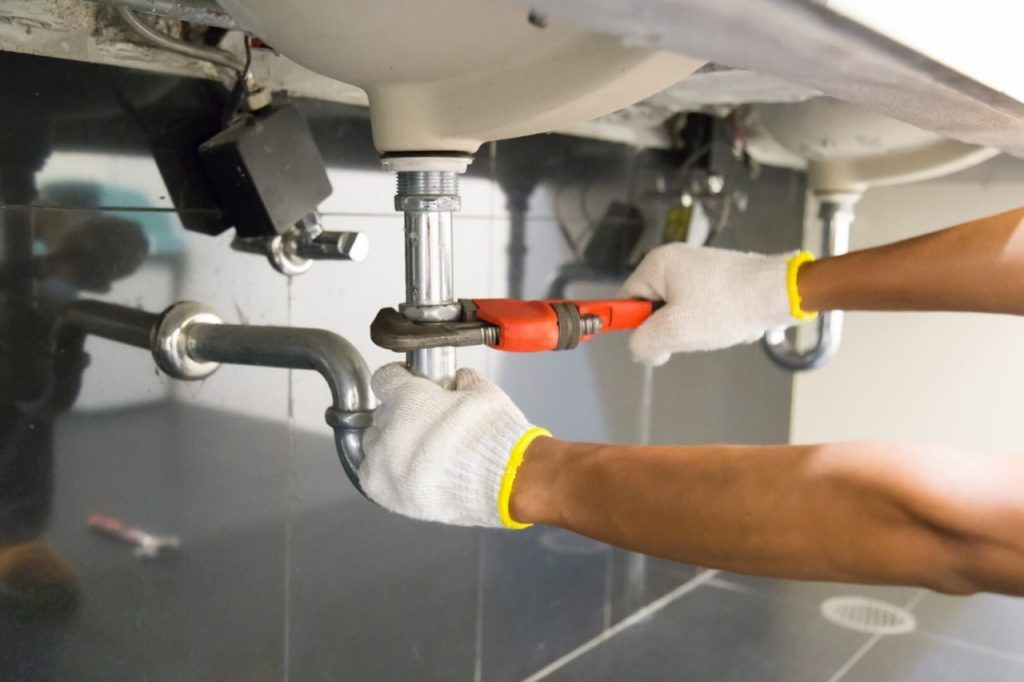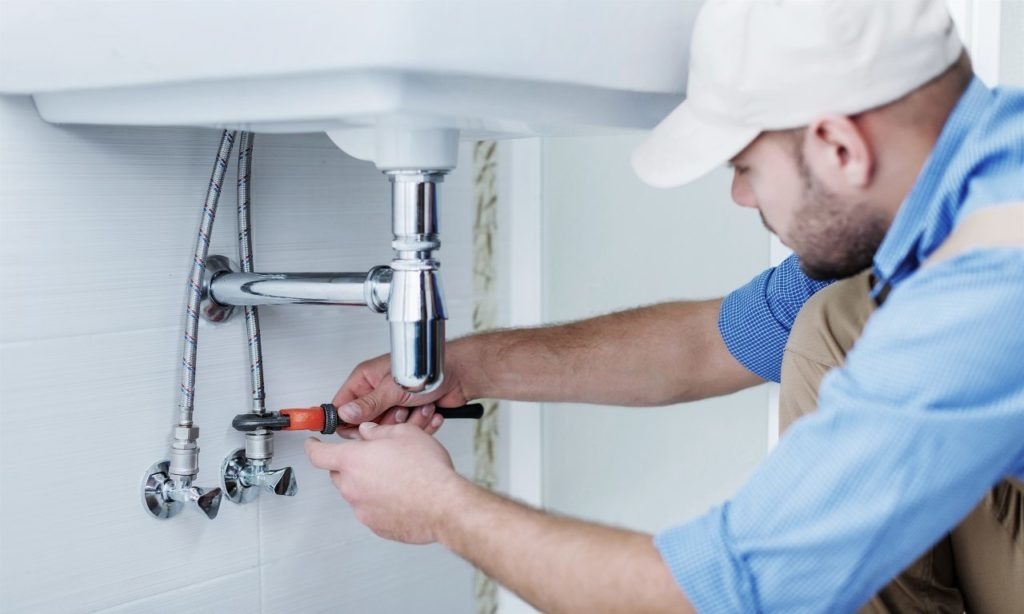Introduction: Why Plumbing Matters for Your Home’s Health
Imagine waking up to a mysterious puddle under your kitchen sink or hearing the ominous drip of a faucet that won’t quit. These aren’t just annoyances—they’re signals from your home’s plumbing system begging for attention. As the backbone of your household, a well-maintained plumbing setup ensures everything from hot showers to efficient dishwashing runs smoothly. But with aging pipes, fluctuating water pressure, and everyday wear, even the sturdiest systems can falter.
At John’s Pumps, we’ve seen it all: from minor clogs that escalate into major floods to overlooked maintenance that leads to thousands in repairs. That’s why we’re sharing these five expert tips designed to keep your home’s flawless. Whether you’re a new homeowner or a long-time resident, these insights will empower you to prevent issues, save money, and extend the life of your system. Let’s dive in and transform your approach to plumbing care.
Tip 1: Regular Inspections to Catch Issues Early
One of the most overlooked aspects of home maintenance is proactive plumbing inspections. Just like a car needs tune-ups, your plumbing system benefits from routine checks to identify potential problems before they become disasters.
The Importance of Seasonal Plumbing Checks
Plumbing systems face unique stresses with each season. In winter, freezing temperatures can crack pipes, while summer heat might exacerbate leaks from expansion and contraction. Experts at John’s Pumps recommend scheduling professional inspections at least twice a year—once in the fall to prepare for cold weather and again in the spring to assess any winter damage.
During these inspections, look for signs like low water pressure, discolored water, or unusual noises from pipes. These could indicate corrosion, mineral buildup, or even root intrusion in sewer lines. Catching these early can prevent a small $200 repair from turning into a $5,000 pipe replacement.
DIY Inspection Checklist for Homeowners
You don’t always need a pro for basic checks. Start by examining visible pipes for rust, damp spots, or bulging. Test your water heater for leaks and ensure the pressure relief valve is functioning. Flush your water heater annually to remove sediment, which improves efficiency and prevents overheating. For sewer lines, consider a simple camera inspection if you’re in an older home—John’s Pumps offers affordable options to make this accessible.

By incorporating these habits, you’ll maintain plumbing integrity and avoid surprises. Remember, consistent inspections are the first line of defense in keeping your home’s plumbing flawless.
Tip 2: Prevent Clogs with Smart Habits and Tools
Clogs are the nemesis of every homeowner, turning a quick rinse into a plumbing nightmare. But with the right habits and tools, you can keep your drains flowing freely and reduce the need for emergency.
Understanding Common Clog Causes
Most clogs stem from everyday culprits: hair in bathroom sinks, grease in kitchen drains, and flushable wipes that aren’t truly flushable. Over time, these build up, restricting flow and potentially causing backups. In areas with hard water, mineral deposits add another layer of trouble, narrowing pipes and straining your plumbing system.
At John’s Plumbing & Pumps, we’ve helped countless clients unclog stubborn blockages, but prevention is always better. Avoid pouring fats, oils, or coffee grounds down the drain—they solidify and create greasy traps. For toilets, stick to toilet paper only; “flushable” products often aren’t, leading to sewer line issues.
Effective Tools and Maintenance Routines
Invest in a drain strainer for sinks and showers to catch debris before it enters the pipes. Monthly, pour a mixture of baking soda and vinegar down drains, followed by hot water, to dissolve minor buildup naturally. For tougher spots, use an enzymatic cleaner rather than harsh chemicals, which can damage pipes over time.
If clogs persist, don’t reach for the plunger blindly—a plumber’s snake or hydro-jetting service from John’s Plumbing & Pumps can clear deep obstructions without harming your plumbing. These proactive steps not only prevent clogs but also extend the lifespan of your fixtures, saving you from frequent plumbing repairs.
Tip 3: Optimize Water Pressure for Efficiency and Longevity
Water pressure that’s too high or too low can wreak havoc on your plumbing. High pressure stresses joints and fixtures, leading to leaks, while low pressure signals underlying issues like pipe corrosion or valve problems.
How to Measure and Adjust Water Pressure
Ideal home water pressure ranges from 40 to 60 PSI. You can test it yourself with a simple pressure gauge attached to an outdoor faucet—available at any hardware store for under $20. If readings exceed 80 PSI, it’s time to install or adjust a pressure regulator, a device that safeguards your plumbing system.
John’s Plumbing & Pumps often installs these regulators during routine service visits, preventing premature wear on appliances like washing machines and dishwashers. Low pressure? Check for kinks in hoses or consult a pro to inspect for scale buildup in pipes, common in regions with hard water.
Upgrading Fixtures for Better Flow
Modern low-flow fixtures are a game-changer for plumbing efficiency. Aerators on faucets and water-efficient showerheads maintain strong pressure while conserving water—potentially cutting your bill by 30%. When replacing old fixtures, opt for those certified by WaterSense for guaranteed performance.
By fine-tuning pressure, you’ll not only protect your plumbing but also enhance daily usability. It’s a small investment that yields big returns in reliability and savings.
Tip 4: Maintain Your Water Heater for Peak Performance
Your water heater is the heart of your hot water plumbing, quietly working behind the scenes to provide comfort. Neglect it, and you’ll face lukewarm showers or skyrocketing energy bills.
Signs Your Water Heater Needs Attention
Common red flags include rusty water, strange noises like rumbling (indicating sediment), or leaks around the base. These issues can reduce efficiency by up to 50%, forcing your heater to work harder and wear out faster.
At John’s Plumbing & Pumps, we emphasize annual maintenance: draining the tank to flush sediment, checking the anode rod for corrosion protection, and testing the temperature-pressure relief valve. For tankless models, descaling prevents mineral buildup, ensuring consistent hot water flow.
Energy-Saving Tips and Upgrades
Set your thermostat to 120°F to balance comfort and efficiency—every degree lower saves 3-5% on energy. Insulate pipes leading from the heater to minimize heat loss, especially in unheated spaces. If your unit is over 10 years old, consider upgrading to a high-efficiency model; tax credits and rebates often make it affordable.
Proper water heater care keeps your plumbing system running hot and efficient, avoiding the cold shock of unexpected failures.
Tip 5: Safeguard Against Leaks and Water Damage
Leaks are silent thieves, wasting up to 10,000 gallons of water per year per household and causing structural damage. Addressing them promptly is crucial for a flawless plumbing setup.
Detecting Hidden Leaks
Not all leaks are obvious. A running toilet might waste 200 gallons daily without a visible drip—check by adding food coloring to the tank and seeing if it seeps into the bowl. For pipes, monitor your water meter; if it runs when everything’s off, there’s a leak somewhere.
John’s Plumbing & Pumps uses advanced leak detection tools, like acoustic sensors, to pinpoint issues without tearing up walls. Early detection saves water, lowers bills, and prevents mold growth.
Prevention Strategies and Repairs
Seal gaps around pipes with caulk to block moisture entry. Install leak detectors in basements and under sinks—they alert you via app before damage spreads. For outdoor plumbing, insulate exposed lines against freezing.
When repairs are needed, opt for quality materials like PEX piping, which is flexible and resistant to bursts. Regular vigilance turns potential catastrophes into minor fixes, preserving your home’s plumbing integrity.
Frequently Asked Questions (FAQ)
What is the most common plumbing problem in homes?
Clogged drains top the list, often caused by grease, hair, or improper disposals. Regular cleaning and mindful habits can prevent most issues, but persistent problems warrant a call to experts like John’s Plumbing & Pumps.
How often should I schedule professional plumbing maintenance?
Aim for annual check-ups, plus seasonal inspections in extreme weather areas. This proactive approach catches wear early, extending your plumbing system’s life and avoiding costly emergencies.
Can I fix a leaky faucet myself, or do I need a plumber?
Simple fixes like tightening connections or replacing washers are DIY-friendly. However, if the leak persists or involves complex plumbing like supply lines, consult a professional to prevent further damage.
Conclusion: Take Control of Your Plumbing Today
A flawless home plumbing system isn’t a luxury—it’s essential for peace of mind, efficiency, and cost savings. By implementing these five expert tips—from regular inspections and clog prevention to pressure optimization, water heater maintenance, and leak safeguards—you’ll fortify your home against common pitfalls. At John’s Plumbing & Pumps, we’re committed to helping homeowners like you achieve just that. Don’t wait for a drip to become a flood; schedule a consultation today and let our team tailor these strategies to your needs. Your home deserves plumbing that performs flawlessly—start with these tips and watch the difference. We cover everything in one place—don’t miss out on the latest insights.
